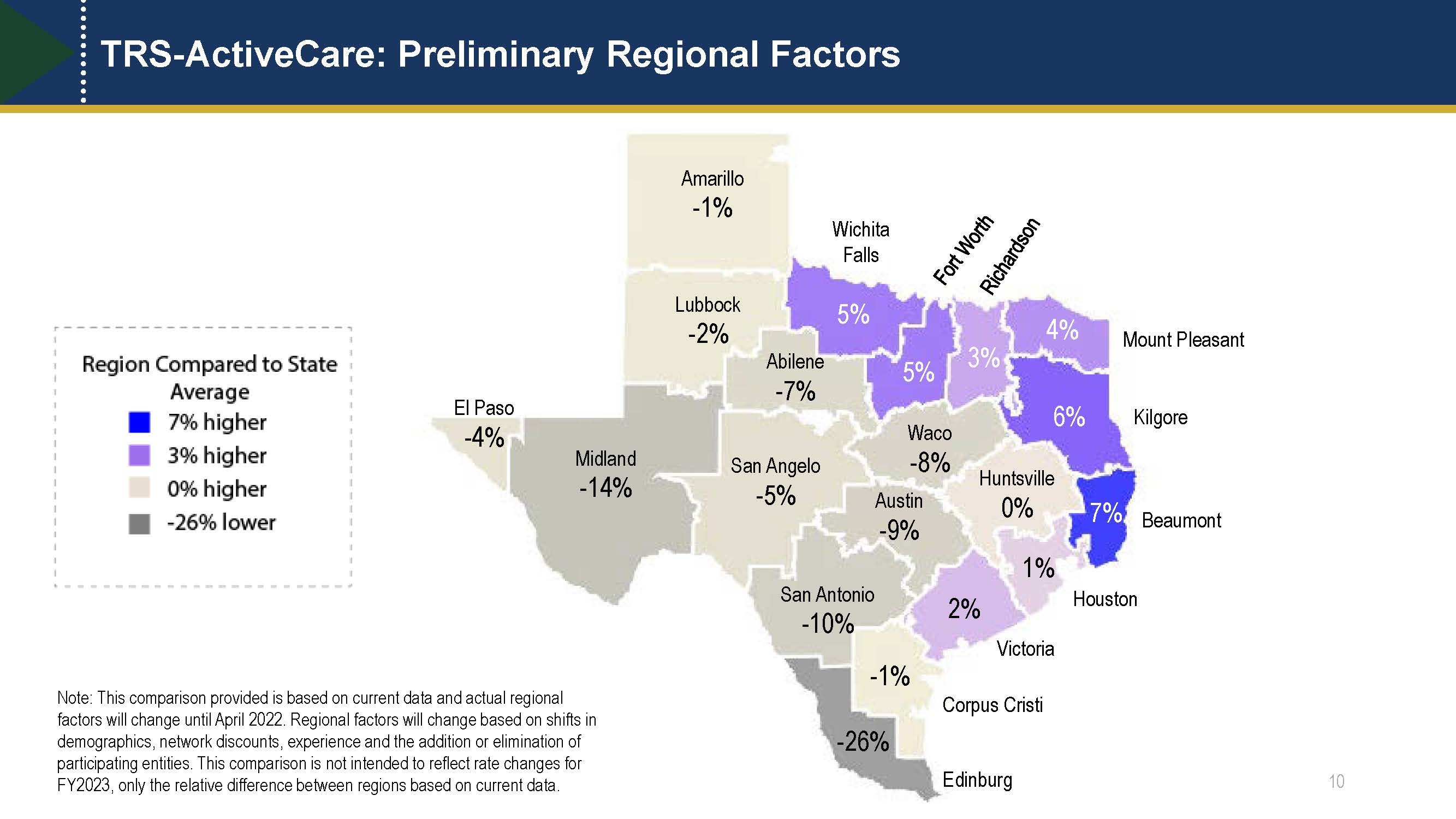The Texas Teacher Retirement System Board convened Dec. 7 and 8 for its last meeting of 2021. Nanette Sissney, vice-chair of the Board and former TCTA state president, was at the helm as chairman Jarvis Hollingsworth was unable to attend in person.
Good news for the pension fund
For the first time in its history, the market value of the TRS pension fund is more than $200 billion. With investment returns of nearly 25% between Sept. 1, 2020, and Aug. 31, 2021, far above the benchmark assumption of 7.25%, the greater-than-expected gains helped to paint a rosy picture of the fund’s financial health.
The fund’s improving financial position increases the likelihood that retirees could receive an ongoing benefit increase in the near future, as opposed to the one-time bonus checks that have been approved in recent years (such as the one to be distributed in January 2022). An ongoing increase would require legislative action; the next regular session begins in January 2023.
But as has often been the case, the actuarial firm that briefed the Board added some notes of caution, suggesting that some of the assumptions used in the actuarial calculations might need to be adjusted in the coming years. For example, the assumption that investment returns will average 7.25% over time, recently reduced from 8%, may still be too high. Despite the past year’s tremendous growth, many analysts are assuming the markets will generate much lower returns in the coming years. The actuary noted that a 7% assumed rate of return will likely become the norm among pension funds. A reduction in the assumed rate would cloud the financial picture and could provide an obstacle to approval of a cost-of-living increase.
Sissney expressed some of the frustration felt by many TRS members when she asked “When is it going to be good enough?” She acknowledged that as trustees of the fund, it is crucial that they work to ensure the sustainability of the pension system, but emphasized that retirees need help. Executive Director Brian Guthrie agreed, saying that at least now the fund is at a point where the Board has the flexibility to have those discussions. He pointed out that the fund is in a very different situation than in 2018, when the economy was less robust and before the legislature implemented contribution increases.
The TRS Board will discuss assumptions and actual experience figures at its February 2022 meeting.
Big changes in ActiveCare premium structure
The Board was also briefed on a new model for determining how much health insurance will cost TRS-ActiveCare participants beginning with the 2022-23 school year. TRS is moving to a system of “regional ratings” that will differentiate ActiveCare premiums according to where participants live. The system will use regional service center boundaries, and school districts were recently briefed by TRS staff on relative costs in their areas.
Some areas of the state have lower medical costs than others, and regional rating will allow TRS to adjust premiums accordingly. The chart below provides an overview of how costs in different regions compare to state averages. For example, premiums in parts of South Texas will be lower than in East Texas due to large differences in the costs of medical care between those areas of the state. Note that these figures do not necessarily mean that premiums in those areas will rise or fall by the specific percentage listed. How their area compares and what premiums might look like will be valuable information for districts that are currently in the process of deciding whether to withdraw from or enter ActiveCare next year.
Districts that are considering leaving or entering ActiveCare for the next school year (for at least a 5-year period) must make a decision by Dec. 31, 2021. TRS will not adopt ActiveCare premiums for 2022-23 until the April 2022 Board meeting.
If you are in a district considering whether to participate in ActiveCare or in a local plan, remember that premiums alone should not be the deciding factor. Before your district makes a decision, ask about details of any local plan under consideration, including key elements such as what prescription drugs are covered, costs of emergency care, coinsurance for hospital stays, etc. No matter how healthy you may be, insurance coverage for unexpected, high-cost medical issues can have a huge impact on your financial future and you should be aware of how the district’s insurance options compare.

First non-Austin office
The Board was also informed of the progress staff has made in establishing a TRS counseling office in El Paso. A contract is under negotiation for office space, a director has been selected, and hiring and training of benefits counselors will run through May 2022 before the office begins counseling sessions for TRS members. TCTA will provide information on how to make appointments with the El Paso office as it becomes available over the next several months.
Copyright© 2024 Texas Classroom Teachers Association® The Educated Choice® All rights reserved.
